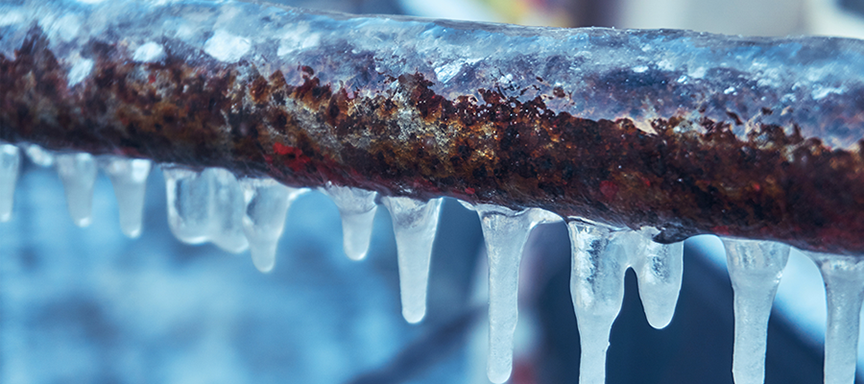
Did you know?
Generally, pipes that are exposed to outdoor temperatures freeze more readily, such as hose bibs, swimming pool lines and water sprinkler lines. Pipes that run along exterior walls in the home with minimal insulation also tend to freeze more easily.
Use the following recommendations from First Mid Insurance Group to prevent frozen pipes in your home:
- Insulate pipes in unheated interior areas, such as crawl spaces and attics.
- Wrap pipes in heat tape or thermostatically-controlled heat cables.
- Open cabinet doors to expose pipes to warm air.
- Seal any leaks with caulk or insulation.
- Disconnect outdoor items such as hoses and faucets. Shut off these items completely using an indoor valve and allow the excess water to drain out.
- Trickle a little water out of your faucets periodically to keep water moving within the pipes.
- Keep your garage door closed if there is a water supply in there.
- Keep your thermostat set at the same temperature during the day and night.
- Do not set your thermostat lower than 55º F when going on vacation. Ask someone to periodically check the temperature in your home while you are away.
Safety First
If you turn on a faucet and no water or only a trickle comes out, your pipes may be frozen. Turn off the main water valve and keep the faucet on. Apply heat to the pipe by using an electric heating pad, hair dryer or portable space heater, or by wrapping the pipe in towels soaked in hot water. You should apply heat until you regain water pressure. If this does not solve the problem, contact a licensed plumber to inspect your pipes.
Call First Mid Insurance Group at 217-234-6428 or email them at insurance@firstmid.com.
Insurance services are not deposits or obligations of the bank, are not insured by the FDIC or any governmental agency, and are not guaranteed.






